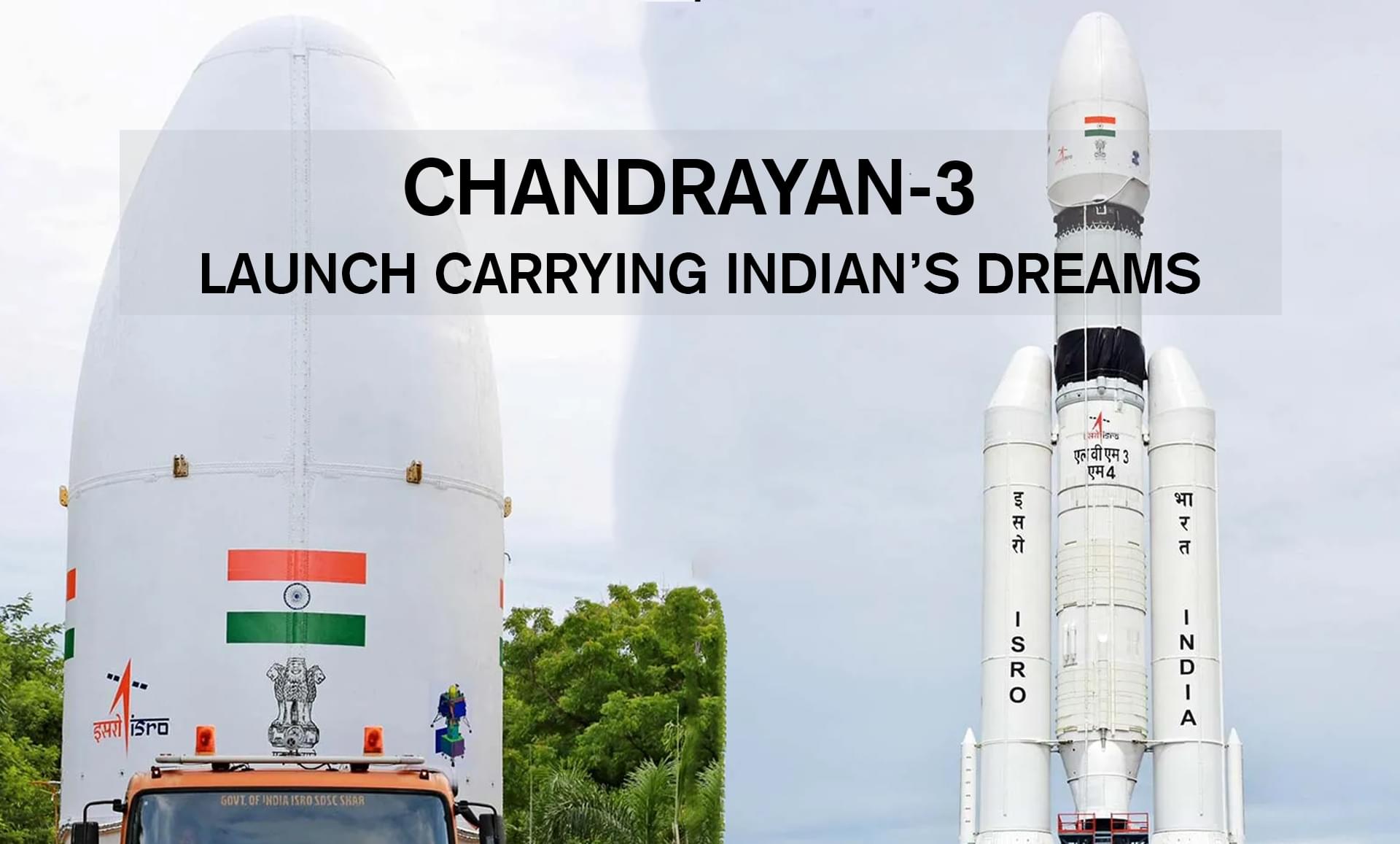
In order to begin the departure of the Chandrayaan-3 lunar mission to study and analyze the Moon, the Indian space agency ISRO (Indian Space Research Organization) acted a soft and safe landing on the Moon, on July 14, 2023. By building on the accomplishments of its predecessors, Chandrayaan-1 and Chandrayaan-2, the third mission of the Chandrayaan-3 has its foremost goals of the examination of space and innovation. Chandrayaan-3 is launched on the same day as Chandryaan-2 after a gap of 4 years. The Satish Dhawan Space Centre which is placed in Andhra Pradesh even though mounted on a GSLV-MK III (Geosynchronous Satellite Launch Vehicle Mark III) bulky-lift rocket. The mission is a worthy illustration of India's growing dedication to firming up its position in the worldwide space community around the ecosphere.
According to, Indian Space Research Organization (ISRO), the lunar mission of Chandryaan-3 has three chief purposes which involve :
- To conduct a rover rambling on the lunatic
- To conduct on-site/in-site several experiments on the surface of the lunar.
- To Determine or establish a safe and soft landing on the surface of the Moon.
The third Lunatic mission of India, Chandryaan-3, combines teamwork and an alliance with a renowned group of space organizations, including Australian, European, and United States (US) counterparts to ISRO. The primary objective of the most recent Chandryaan-3 mission, which is a series of ISRO’s "Moon Craft" Celestial missions, is to bring out India's first soft and safe landing on several bodies of lunar. The mission will demonstrate the various new creative technologies that are essential for astronomical space flight.
Candryaan-3 covers three prime elements that involve :
Lander :The lander played a key role in the lunar landing's smooth and secure touchdown. It also resembles a box-shaped structure with four lending legs and four landing thrusters each weighing about 800 newtons. It will deliver the rover and a variety of scientific tools to conduct on-site research and analysis. The Laser Doppler Velocimeter (LDV) is a well-equipped piece of apparatus on the Chandryan-3 lander. As Compared to Chamdryaan-2, which increased the instrumentation redundancy, the effect legs are formed more powerfully. ISRO is always working to increase structural rigidity and is building up a number of backup mechanisms.
Rover :It encompasses the Outline of the Chadryan-3 Rover which contains :
- 500 meters of Range (nearly 1,640 feet)
- Almost 26 kilograms of weight (57 pounds)
- Several types of scientific instruments such as cameras, spectrometers, and drill as well.
- Six-wheeled design
- Complete communication with the lander and ground supervisory body crew of India.
- The estimated lifespan of one Celestial Day (Nearly 14 days of Earth)
The Rover of Chandryaan-3 perhaps made many vital scientific discoveries, such as :
- The overall formation of the moon’s surface
- The existence of water ice in the mud of Celestial
- The progress of the Celestial atmosphere
- The context of lunar effects
The Propulsion Module :The propulsion module will transfer the lander and rover configurations up to a 100 km celestial circle. It resembles a box structure with a large solar panel with a leg on each side and a large cylinder serving as a mounting framework for the entire lander at the top. The Spectro-polarimetry of Habitable Planet Earth (SHAPE) payload is also sent by this propulsion module in order to study the polarimetric and spectral properties of Earth from the Celestial orbit.
The utmost important determination of the formation of Chandryaan-3 is that when the mission of Chandrayaan-2 effectively landed on the Vikram lander and Pragyan rover near the Moon's South Pole in 2019, it grabbed every person’s attention all over the world. But there were some kinds of insignificant problems in the effort. At the time, of trying to land on the moon, the Vikram lander from Chandrayaan-2 has been not working. Despite the event, signified a main achievement in the space history of India. Apart from that, choosing July month for the launch of Celestial mission Chandryan-3, the chief reason behind is the nearness between Moon and Earth.
In December 2019, the Indian Space Research Organization (ISRO) requested preliminary funding for the project, amounting to approximately Rs. 75 crores (US 9.4 million), of which Rs. 60 crores (US 7.5 million) will be used for accumulating costs for various types of equipment, machinery, and additional capital expenses. The remaining Rs. 15 crores (US 1.9 million) will be used for revenue expenditure. After the project was confirmed, the former chairman of the Indian Space Research Organization (ISRO), K. Sivan, stated that the assessed and predictable cost for the 2023 Chandryan-3 mission would be close to Rs. 615 crores, or roughly 721 crores (US 90 million $).
AtGetraise Technologieswe are here to assist you by providing some sort of technical information on recent and general topics.